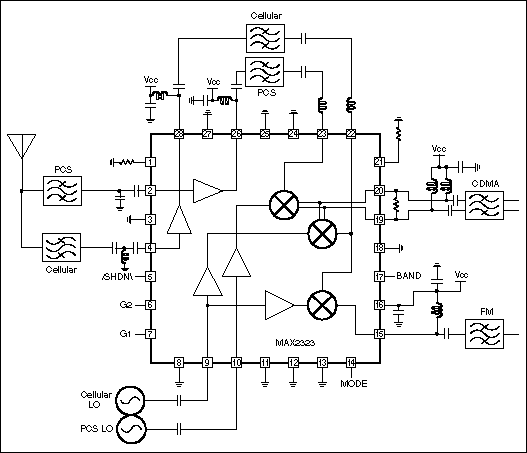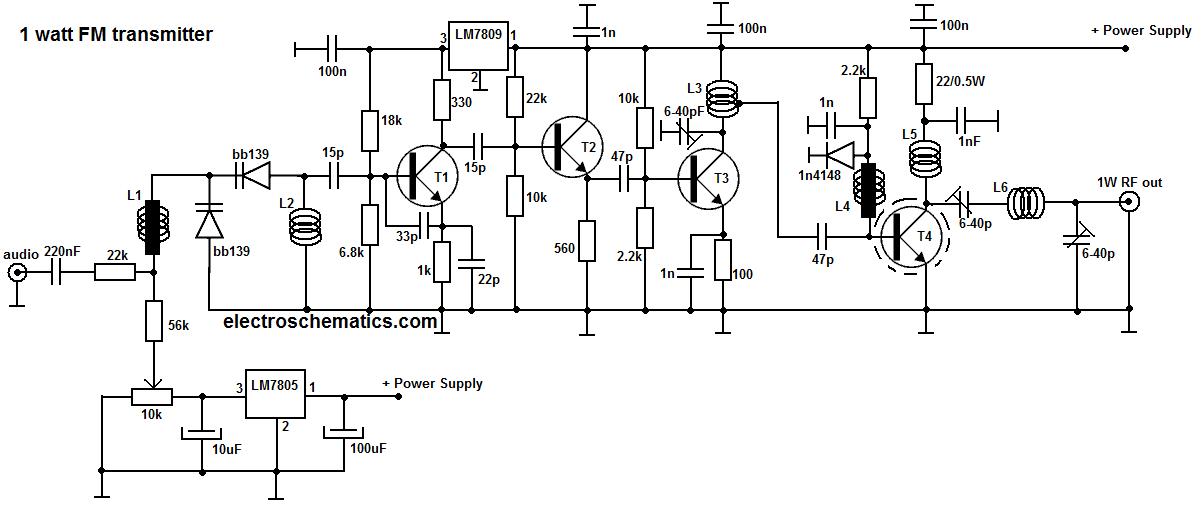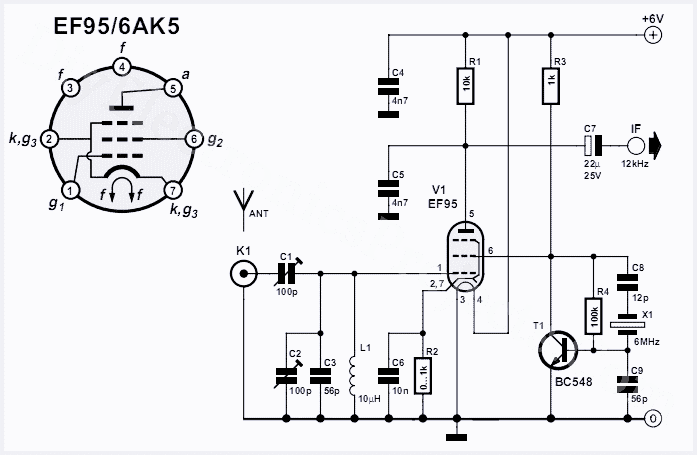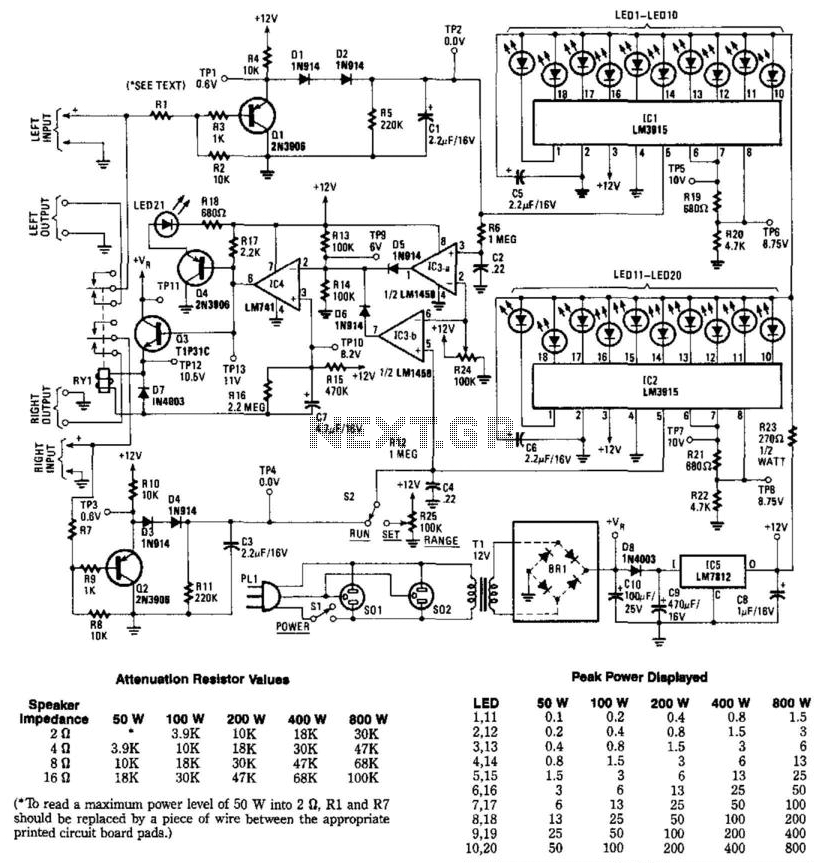
new 4 channel portable audio mixer
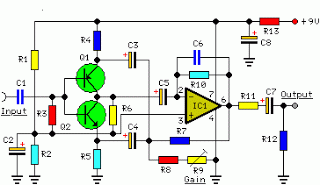
The objective of this project was to design a compact, portable mixer powered by a 9V PP3 battery while maintaining high-quality performance. The mixer consists of three primary modules that can be adjusted in number and configuration to meet individual requirements. The three main modules are: Input Amplifier Module, which is a low-noise circuit with a variable voltage gain (10 - 100) preset, mainly intended for high-quality microphone input but also suitable for low-level line input; Tone Control Module, which features a three-band (Bass, Middle, Treble) tone control circuit providing unity gain when the controls are set to a flat frequency response. This module can be inserted after one or more Input Amplifier Modules and/or after the Main Mixer Amplifiers. The block diagram of the entire mixer illustrates four Input Amplifier Modules followed by four in-out switchable Tone Control Modules, one stereo line input, four mono main faders, one stereo dual-ganged main fader, four pan pots, a stereo Main Mixer Amplifier Module, and two additional Tone Control Modules that can be switched in and out for each channel before the main left and right outputs. This layout can be rearranged according to individual preferences. A remarkable feature of this design is that the complete stereo mixer, as depicted in the block diagram, draws less than 6mA of current. The basic arrangement of this circuit is based on the older Quad magnetic pickup cartridge module, which has been modified to accommodate microphone input and a single-rail low voltage supply. This low-noise, fully symmetrical, two-transistor head amplifier configuration allows for the use of a standard FET input operational amplifier as the second gain stage, even for very sensitive microphone inputs. The voltage gain of this amplifier can be adjusted using R9 from 10 to 100, corresponding to 20 to 40 dB.
The portable mixer design integrates three essential modules, each serving a specific role in audio processing. The Input Amplifier Module is engineered to minimize noise while providing adjustable gain, which is crucial for achieving high fidelity in audio applications. The variable voltage gain feature allows users to tailor the input sensitivity according to the source, accommodating both microphones and low-level line signals.
The Tone Control Module enhances the mixer’s versatility by offering three distinct frequency bands: Bass, Middle, and Treble. This allows users to shape the audio output to their preferences or to compensate for acoustic anomalies in different environments. The unity-gain characteristic when controls are flat ensures that the audio signal remains unaltered when no adjustments are made, preserving the integrity of the original sound.
The overall schematic design includes a block diagram that outlines the arrangement of components, demonstrating a flexible architecture that can adapt to various user needs. The ability to rearrange modules provides an additional layer of customization, making it suitable for a wide range of applications, from live performances to studio recordings.
Power efficiency is a key consideration in this design, with the entire mixer consuming less than 6mA of current. This low power consumption is particularly advantageous for portable applications, ensuring extended battery life without compromising performance.
The circuit's foundation is based on the traditional Quad magnetic pickup cartridge module, which has been effectively modified for modern requirements. The symmetrical two-transistor head amplifier design is notable for its low noise characteristics, making it suitable for sensitive microphone inputs. The integration of a FET input operational amplifier in the second gain stage further enhances the circuit's performance, allowing for precise gain adjustments that cater to a variety of input sources.
In conclusion, this portable mixer design exemplifies a balance of high-quality audio performance, user customization, and efficient power usage, making it an ideal solution for audio professionals and enthusiasts alike.The target of this project was the design of a small portable mixer supplied by a 9V PP3 battery, keeping high quality performance. The mixer is formed assembling three main modules that can be varied in number and/or disposition to suit everyone needs.
The three main modules are: Input Amplifier Module: a low noise circuit equipped with a variabl e voltage-gain (10 - 100) preset, primarily intended as high quality microphone input, also suitable for low-level line input. Tone Control Module: a three-band (Bass, Middle, Treble) tone control circuit providing unity-gain when its controls are set to flat frequency response.
It can be inserted after one or more Input Amplifier Modules and/or after the Main Mixer Amplifiers. The image below shows a Block diagram of the entire mixer featuring four Input Amplifier Modules followed by four in-out switchable Tone Control Modules, one stereo Line input, four mono Main Faders, one stereo dual-ganged Main Fader, four Pan-Pots, a stereo Main Mixer Amplifier Module and two further Tone Control Modules switchable in and out for each channel, inserted before the main Left and Right outputs. Obviously this layout can be rearranged at everyone wish. An astonishing feature of this design lies in the fact that a complete stereo mixer as shown below in the Block diagram draws less than 6mA current!
The basic arrangement of this circuit is derived from the old Quad magnetic pick-up cartridge module. The circuit was rearranged to cope with microphone input and a single-rail low voltage supply. This low-noise, fully symmetrical, two-transistor head amplifier layout, allows the use of a normal FET input Op-Amp as the second gain stage, even for very sensitive microphone inputs.
The voltage-gain of this amplifier can be varied by means of R9 from 10 to 100, i. e. 20 to 40dB. 🔗 External reference
The portable mixer design integrates three essential modules, each serving a specific role in audio processing. The Input Amplifier Module is engineered to minimize noise while providing adjustable gain, which is crucial for achieving high fidelity in audio applications. The variable voltage gain feature allows users to tailor the input sensitivity according to the source, accommodating both microphones and low-level line signals.
The Tone Control Module enhances the mixer’s versatility by offering three distinct frequency bands: Bass, Middle, and Treble. This allows users to shape the audio output to their preferences or to compensate for acoustic anomalies in different environments. The unity-gain characteristic when controls are flat ensures that the audio signal remains unaltered when no adjustments are made, preserving the integrity of the original sound.
The overall schematic design includes a block diagram that outlines the arrangement of components, demonstrating a flexible architecture that can adapt to various user needs. The ability to rearrange modules provides an additional layer of customization, making it suitable for a wide range of applications, from live performances to studio recordings.
Power efficiency is a key consideration in this design, with the entire mixer consuming less than 6mA of current. This low power consumption is particularly advantageous for portable applications, ensuring extended battery life without compromising performance.
The circuit's foundation is based on the traditional Quad magnetic pickup cartridge module, which has been effectively modified for modern requirements. The symmetrical two-transistor head amplifier design is notable for its low noise characteristics, making it suitable for sensitive microphone inputs. The integration of a FET input operational amplifier in the second gain stage further enhances the circuit's performance, allowing for precise gain adjustments that cater to a variety of input sources.
In conclusion, this portable mixer design exemplifies a balance of high-quality audio performance, user customization, and efficient power usage, making it an ideal solution for audio professionals and enthusiasts alike.The target of this project was the design of a small portable mixer supplied by a 9V PP3 battery, keeping high quality performance. The mixer is formed assembling three main modules that can be varied in number and/or disposition to suit everyone needs.
The three main modules are: Input Amplifier Module: a low noise circuit equipped with a variabl e voltage-gain (10 - 100) preset, primarily intended as high quality microphone input, also suitable for low-level line input. Tone Control Module: a three-band (Bass, Middle, Treble) tone control circuit providing unity-gain when its controls are set to flat frequency response.
It can be inserted after one or more Input Amplifier Modules and/or after the Main Mixer Amplifiers. The image below shows a Block diagram of the entire mixer featuring four Input Amplifier Modules followed by four in-out switchable Tone Control Modules, one stereo Line input, four mono Main Faders, one stereo dual-ganged Main Fader, four Pan-Pots, a stereo Main Mixer Amplifier Module and two further Tone Control Modules switchable in and out for each channel, inserted before the main Left and Right outputs. Obviously this layout can be rearranged at everyone wish. An astonishing feature of this design lies in the fact that a complete stereo mixer as shown below in the Block diagram draws less than 6mA current!
The basic arrangement of this circuit is derived from the old Quad magnetic pick-up cartridge module. The circuit was rearranged to cope with microphone input and a single-rail low voltage supply. This low-noise, fully symmetrical, two-transistor head amplifier layout, allows the use of a normal FET input Op-Amp as the second gain stage, even for very sensitive microphone inputs.
The voltage-gain of this amplifier can be varied by means of R9 from 10 to 100, i. e. 20 to 40dB. 🔗 External reference
